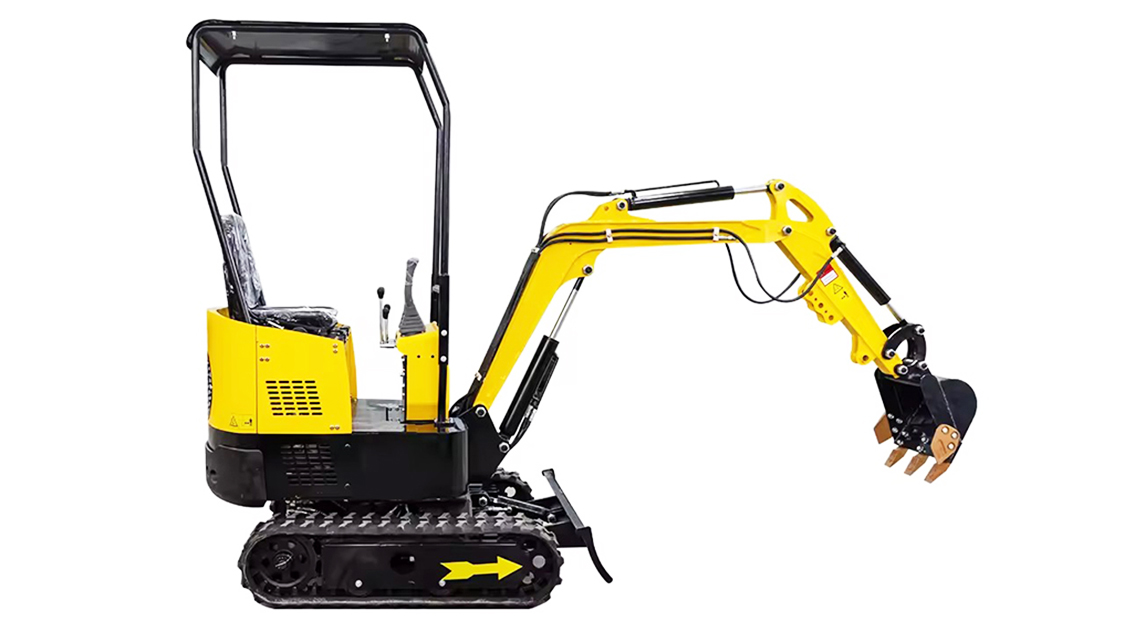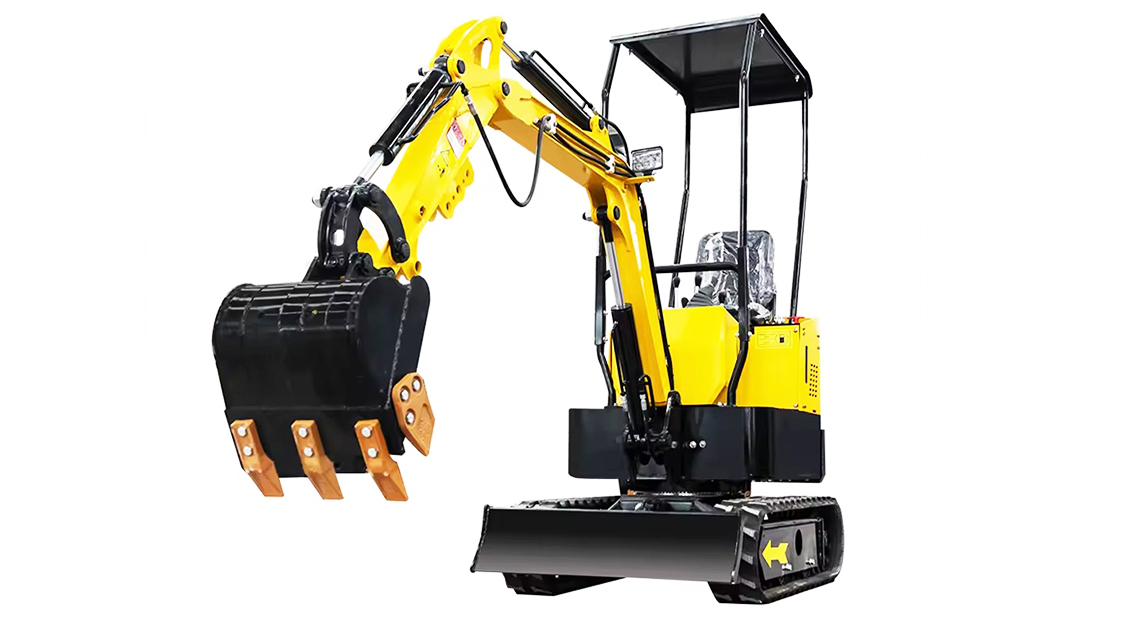I. Introduction
Mini excavators are invaluable assets in construction, landscaping, and various other industries, offering versatility and power in a compact package. However, like any heavy machinery, they require consistent maintenance to ensure optimal performance and longevity. Neglecting regular upkeep can lead to costly repairs, unexpected downtime, and reduced productivity. This article provides a comprehensive guide to mini excavator maintenance, empowering owners and operators to proactively prevent expensive repairs and maximize their machine's lifespan.
II. Understanding the Importance of Preventative Maintenance
Extending Equipment Lifespan:
Regular maintenance significantly extends the operational life of a mini excavator by reducing wear and tear on critical components.
Consistent lubrication, fluid changes, and inspections prevent premature failures and maintain optimal performance.
Minimizing Downtime:
Preventative maintenance anticipates potential issues, preventing unexpected breakdowns and project delays.
Scheduled maintenance allows for proactive repairs, keeping the machine operational during peak seasons.
Cost Efficiency:
Lower long-term repair costs are achieved through proactive maintenance, avoiding major overhauls and emergency repairs.
Optimized fuel efficiency and performance lead to reduced operational costs.
Safety:
Regular checks ensure the machine operates safely for the operator and others on the job site.
Identifying potential safety hazards early prevents accidents and injuries.
III. Daily Maintenance Checks
Visual Inspections:
Check for leaks of hydraulic fluid, engine oil, and coolant, which can indicate serious problems.
Inspect hoses, belts, and connections for damage, cracks, or loose fittings.
Examine the undercarriage for wear, damage, or loose components.
Fluid Level Checks:
Check engine oil, hydraulic fluid, coolant, and fuel levels before each use.
Add fluids as necessary to maintain proper operating levels.
Greasing and Lubrication:
Identify grease points according to the manufacturer's manual and lubricate them regularly.
Use the correct type of grease for specific components to ensure proper function.
Checking Tracks and Tires:
Inspect track tension and condition for proper alignment and wear (if applicable).
Check tire pressure and condition for optimal performance and safety (if applicable).
Bucket and Attachment Inspection:
Inspect bucket teeth and cutting edges for wear or damage, replacing them as needed.
Check attachment connections and pins for tightness and wear.
IV. Weekly Maintenance Tasks
Air Filter Inspection and Cleaning:
Check the air filter for dirt and debris, which can restrict airflow and reduce engine performance.
Clean or replace the air filter as needed to maintain optimal engine efficiency.
Fuel Filter Inspection:
Check the fuel filter for blockages or contamination, which can lead to engine problems.
Replace the fuel filter according to the manufacturer's recommendations.
Battery Inspection:
Check battery terminals for corrosion, cleaning them to ensure proper electrical connections.
Test battery voltage and condition to ensure reliable starting and operation.
Hydraulic System Checks:
Inspect hydraulic hoses and fittings for leaks or damage, tightening or replacing them as needed.
Check hydraulic fluid for contamination, which can damage the system.
Cooling System Checks:
Inspect the radiator and cooling fan for debris, cleaning them to maintain proper cooling.
Check coolant concentration to ensure proper freeze protection and corrosion resistance.
V. Monthly and Scheduled Maintenance
Oil and Filter Changes:
Change engine oil and filters at specified intervals to maintain engine lubrication and cleanliness.
Change hydraulic oil and filters according to the manufacturer's recommendations to prevent system damage.
Undercarriage Maintenance:
Inspect and adjust track tension to prevent excessive wear and damage.
Check rollers, idlers, and sprockets for wear, replacing them as needed.
Engine Tune-Ups:
Check and adjust valve clearances to ensure proper engine performance.
Inspect and replace spark plugs (if applicable) to maintain efficient combustion.
Hydraulic System Flushing:
Flush the hydraulic system to remove contaminants and maintain system performance.
Replace hydraulic fluid at recommended intervals to prevent system damage.
Inspection of Structural Components:
Check for cracks or damage in the boom, arm, and frame to ensure structural integrity.
VI. Operator Training and Best Practices
Proper Operation Techniques:
Avoid excessive stress on the machine to prevent premature wear and damage.
Use the correct operating speeds and techniques for specific tasks.
Recognizing Warning Signs:
Identify unusual noises, vibrations, or performance changes that may indicate problems.
Report issues promptly to maintenance personnel to prevent further damage.
Daily Log Keeping:
Maintain a log of daily checks and observations to track maintenance tasks and identify trends.
Track maintenance tasks and service intervals to ensure timely upkeep.
VII. Tools and Equipment for Maintenance
Essential Tools:
Grease gun, wrenches, screwdrivers, fluid level gauges, hydraulic pressure testers, battery testers, air filter cleaning tools.
Safety Equipment:
Safety glasses, gloves, hearing protection, work boots to ensure operator safety.
Maintenance Kits:
Pre-packaged kits containing essential filters and fluids to simplify maintenance tasks and ensure proper parts.
VIII. Troubleshooting Common Issues
Hydraulic Leaks:
Identify the source of leaks and repair or replace components to prevent fluid loss and system damage.
Check for loose fittings and damaged hoses, tightening or replacing them as needed.
Engine Overheating:
Check coolant levels, radiator condition, and thermostat function to identify and resolve cooling system issues.
Identify and resolve cooling system issues to prevent engine damage.
Track Issues:
Adjust track tension and inspect for wear to prevent track damage and ensure proper operation.
Replace damaged track components to maintain track integrity.
Electrical Problems:
Check fuses, wiring, and battery connections to identify and resolve electrical faults.
Identify and resolve electrical faults to ensure proper machine operation.
IX. The Importance of Professional Inspections
Scheduled Professional Service:
Regular inspections by certified technicians to ensure comprehensive diagnostics and preventative maintenance.
Comprehensive diagnostics and preventative maintenance to prevent major repairs.
Identifying Hidden Issues:
Detect potential problems that may not be visible to the operator using specialized tools and expertise.
Using specialized tools and expertise to find problems early.
X. Conclusion
Preventative maintenance is essential for ensuring the longevity, performance, and safety of a mini excavator. By adhering to daily, weekly, and monthly maintenance schedules, operators and owners can significantly reduce the risk of costly repairs and downtime. Regular professional inspections further enhance the machine's reliability, ensuring it remains a valuable and productive asset. Investing time and effort in proper maintenance not only saves money in the long run but also contributes to a safer and more efficient work environment.
Post time:Sep-25-2020



